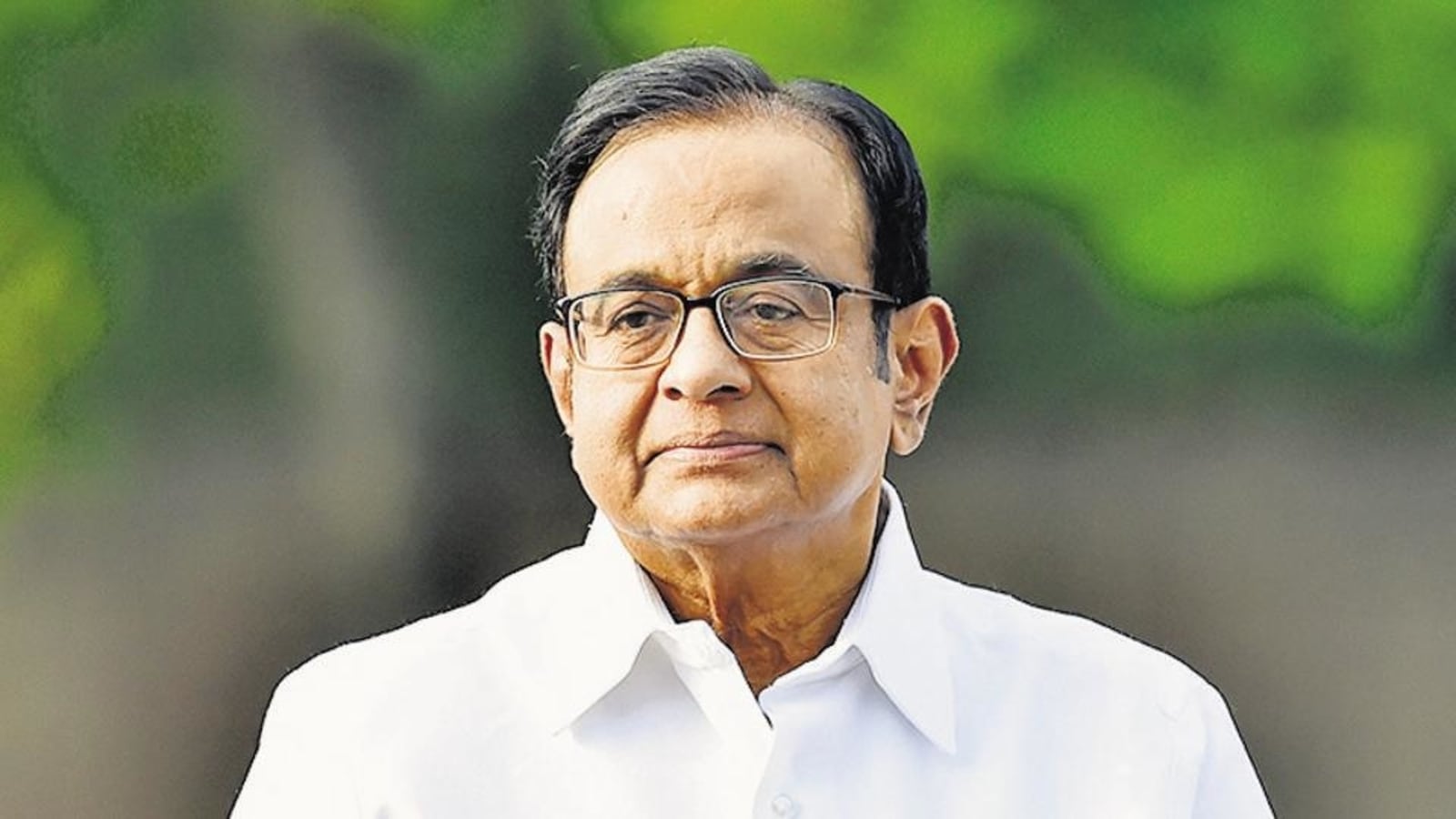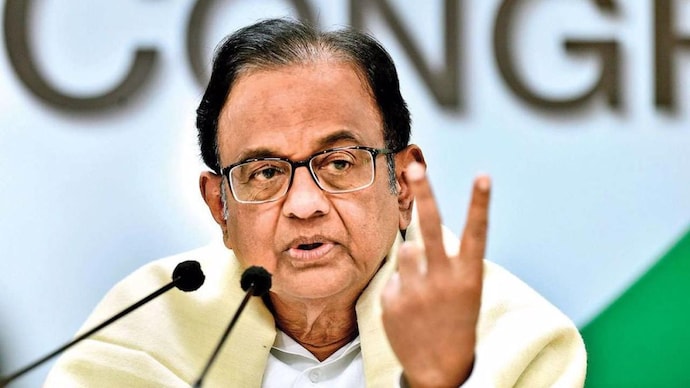P Chidambaram Criticizes BJP’s Claims on Black Money as ₹2,000 Notes Controversy Deepens In the midst of the ongoing controversy surrounding the withdrawal of ₹2,000 notes from circulation, former finance minister P Chidambaram has taken a direct swipe at the Bharatiya Janata Party (BJP), suggesting that their claims of unearthing black money have been debunked. Chidambaram’s remarks came in response to the State Bank of India’s recent clarification that no identification proof or forms are required to exchange ₹2,000 notes. He highlighted the lack of utility and retail exchange value of these high-denomination notes, raising a pertinent question: “Who kept ₹2,000 and used them?” This challenges the BJP’s narrative of combating black money through the withdrawal of ₹2,000 notes.
 The revelation that no identification proof is necessary for exchanging ₹2,000 notes raises concerns about the potential for individuals hoarding black money to discreetly exchange their holdings without attracting attention. Chidambaram’s critique challenges the government’s justification for withdrawing the ₹2,000 notes and exposes the lack of effectiveness in curbing black money through this measure. He asserts that the BJP’s claims have been thoroughly discredited, rendering their spin on unearthing black money as nothing more than political rhetoric.
The revelation that no identification proof is necessary for exchanging ₹2,000 notes raises concerns about the potential for individuals hoarding black money to discreetly exchange their holdings without attracting attention. Chidambaram’s critique challenges the government’s justification for withdrawing the ₹2,000 notes and exposes the lack of effectiveness in curbing black money through this measure. He asserts that the BJP’s claims have been thoroughly discredited, rendering their spin on unearthing black money as nothing more than political rhetoric.
Chidambaram pointedly remarked, “The keepers of ₹2,000 notes are being welcomed on a red carpet to exchange their notes! So much for the government’s declared objective of rooting out black money.” He further criticizes the decision to introduce the ₹2,000 notes in 2016 as a “foolish move” and expresses relief that they are now being phased out, albeit seven years later.
Chidambaram Challenges BJP’s Black Money Claims
The withdrawal of the ₹2,000 notes has caused confusion and criticism, with reports of many shops refusing to accept them following the Reserve Bank of India’s announcement. The RBI clarified that ₹2,000 notes will remain legal tender until a specified date and encouraged people to deposit or exchange them within that timeframe. The State Bank of India outlined the process for customers to exchange up to 10 notes of ₹2,000 at a time without the need for identification proof or form-filling. However, there are no restrictions on depositing higher amounts of ₹2,000 notes in bank accounts, provided Know Your Customer (KYC) norms are followed.
Interestingly, petrol pumps have witnessed an increase in cash transactions as people opt to utilize their ₹2,000 notes before they are phased out completely.
The withdrawal of the ₹2,000 notes, introduced seven years ago, has sparked intense criticism from opposition leaders, while BJP leaders have defended the move. Former chief economic adviser K Subramanian argued that the withdrawal would not significantly impact the general public, given their limited possession of ₹2,000 notes, and emphasized its potential to deter black money hoarding. Nripendra Mishra, former principal secretary to PM Modi, asserted that the Prime Minister had never favored ₹2,000 notes due to their impracticality for daily use.
Chidambaram also delved into the historical context surrounding the ₹2,000 notes, labeling them a “band-aid” intended to overshadow the ill-fated decision to demonetize ₹500 and ₹1,000 notes in 2016. He recalls how, shortly after demonetization, the government and RBI were compelled to reintroduce the ₹500 note. Given these circumstances, Chidambaram suggests that it would not be surprising if the government and RBI were to reintroduce the ₹1,000 note as well. He concludes that demonetization has come full circle, highlighting the tumultuous journey and questionable effectiveness of the government’s demonetization policy.
In summary,
Chidambaram’s critique of the BJP’s black money narrative serves to shed light on the questionable efficacy of the withdrawal of ₹2,000 notes. With the State Bank of India’s clarification on the exchange rules, Chidambaram’s questioning of who kept and utilized these high-value notes raises doubts about the government’s claims of combating black money. The controversy surrounding the withdrawal of ₹2,000 notes continues to unfold, with concerns over its impact on the economy and the effectiveness of the government’s measures to tackle illicit financial activities.
In the midst of the ongoing controversy surrounding the withdrawal of ₹2,000 notes from circulation, former finance minister P Chidambaram has taken a direct swipe at the Bharatiya Janata Party (BJP), suggesting that their claims of unearthing black money have been debunked. Chidambaram’s remarks came in response to the State Bank of India’s recent clarification that no identification proof or forms are required to exchange ₹2,000 notes. He highlighted the lack of utility and retail exchange value of these high-denomination notes, raising a pertinent question: “Who kept ₹2,000 and used them?” This challenges the BJP’s narrative of combating black money through the withdrawal of ₹2,000 notes.
Chidambaram’s Pertinent Question: Who Utilized ₹2,000 Notes?
The revelation that no identification proof is necessary for exchanging ₹2,000 notes raises concerns about the potential for individuals hoarding black money to discreetly exchange their holdings without attracting attention. Chidambaram’s critique challenges the government’s justification for withdrawing the ₹2,000 notes and exposes the lack of effectiveness in curbing black money through this measure. He asserts that the BJP’s claims have been thoroughly discredited, rendering their spin on unearthing black money as nothing more than political rhetoric.
Chidambaram pointedly remarked, “The keepers of ₹2,000 notes are being welcomed on a red carpet to exchange their notes! So much for the government’s declared objective of rooting out black money.” He further criticizes the decision to introduce the ₹2,000 notes in 2016 as a “foolish move” and expresses relief that they are now being phased out, albeit seven years later.
The withdrawal of the ₹2,000 notes has caused confusion and criticism, with reports of many shops refusing to accept them following the Reserve Bank of India’s announcement. The RBI clarified that ₹2,000 notes will remain legal tender until a specified date and encouraged people to deposit or exchange them within that timeframe. The State Bank of India outlined the process for customers to exchange up to 10 notes of ₹2,000 at a time without the need for identification proof or form-filling. However, there are no restrictions on depositing higher amounts of ₹2,000 notes in bank accounts, provided Know Your Customer (KYC) norms are followed.
Interestingly, petrol pumps have witnessed an increase in cash transactions as people opt to utilize their ₹2,000 notes before they are phased out completely.
The withdrawal of the ₹2,000 notes, introduced seven years ago, has sparked intense criticism from opposition leaders, while BJP leaders have defended the move. Former chief economic adviser K Subramanian argued that the withdrawal would not significantly impact the general public, given their limited possession of ₹2,000 notes, and emphasized its potential to deter black money hoarding. Nripendra Mishra, former principal secretary to PM Modi, asserted that the Prime Minister had never favored ₹2,000 notes due to their impracticality for daily use.
Chidambaram also delved into the historical context surrounding the ₹2,000 notes, labeling them a “band-aid” intended to overshadow the ill-fated decision to demonetize ₹500 and ₹1,000 notes in 2016. He recalls how, shortly after demonetization, the government and RBI were compelled to reintroduce the ₹500 note. Given these circumstances, Chidambaram suggests that it would not be surprising if the government and RBI were to reintroduce the ₹1,000 note as well. He concludes that demonetization has come full circle, highlighting the tumultuous journey and questionable effectiveness of the government’s demonetisation policy.
In summary, Chidambaram’s critique of the BJP’s black money narrative serves to shed light on the questionable efficacy of the withdrawal of ₹2,000 notes. With the State Bank of India’s clarification on the exchange rules, Chidambaram’s questioning of who kept and utilized these high-value notes raises doubts about the government’s claims of combating black money. The controversy surrounding the withdrawal of ₹2,000 notes continues to unfold, with concerns over its impact on the economy and the effectiveness of the government’s measures to tackle illicit financial activities.
